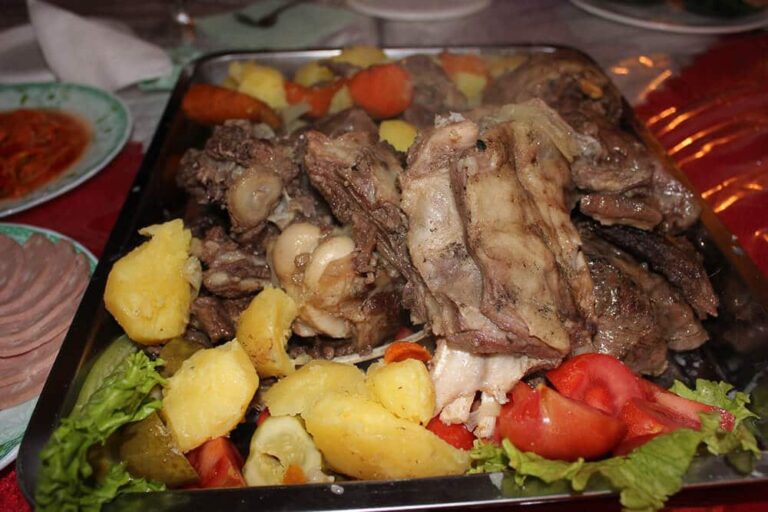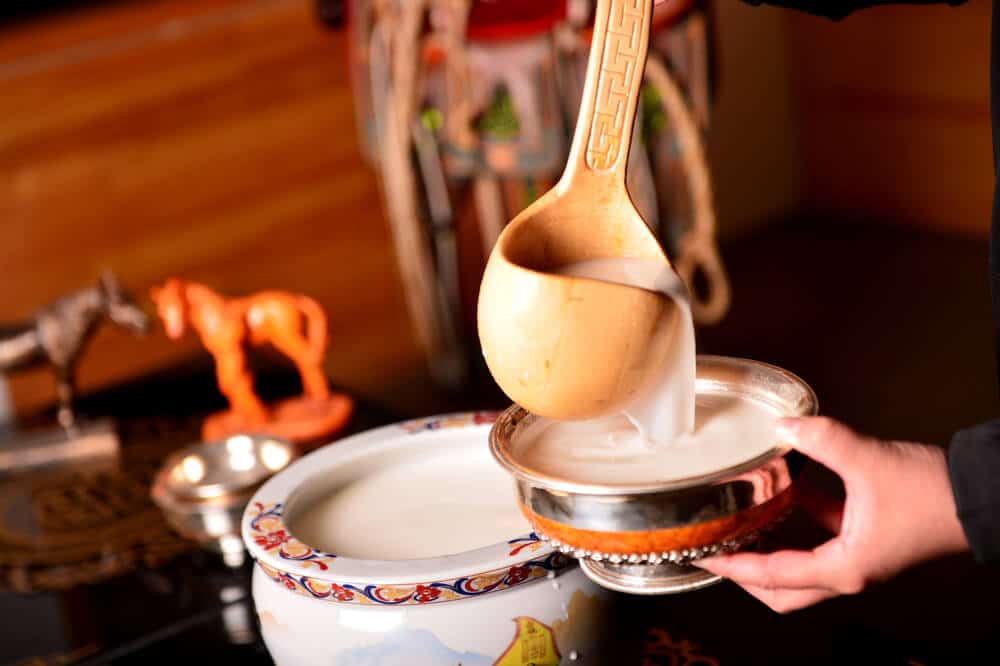
Mongolian traditional food is particular in that it evolved according to the country’s extreme climate and old-aged nomadic culture, defined by its specific methods of preparing meals and unique dietary variations. Mongolians like dairy products (i.e., cheese and dry curd) in summer and fall, while in spring and winter meat is preferred. Flour and rice, on the other hand, represent a large portion of the diet during all seasons. The food is mostly fried on open fire but sometimes steamed or boiled. Most Mongolians prefer mutton and beef, chicken and fish only being popular in urban areas. If Mongolian diet is not for the liking, there are many alternatives and international choices in the capital (Indian, Italian, Chinese, Korean, Japanese and Russian).
AIRAG – FERMENTED MARE'S MILK

Airag is the traditional national beverage of Mongolia. Horses are quintessential to the Mongolian identity and constitute an important aspect of the nomadic lifestyle. Not only do they serve as a ride, they are the source of local beer, Airag. The drink contains a small amount of carbon dioxide, and up to 4% of alcohol. The taste is slightly sour, but quite agreeable after some time. The exact taste depends both on the characteristics of the pastures and the exact method of production. The beverage is a rich source of vitamins and minerals for the nomads.
KHORKHOG AND BOODOG – MONGOLIAN BBQ

Khorkhog, the world-renowned BBQ, is probably the most exciting and the tastiest dish of all; but be warned, it is nothing like the traditional barbecue. For this dish, mutton is slow cooked with vegetables in a tight confine, using heated stones (that’s right, actual stones). Boodog is like Khorkhog, but for a whole goat or sheep; in this regard, it is quite similar to Thanksgiving Turkey, differing only in extra stones to fasten the process. The end products are savory and soft and can get you going for the full day.
MONGOLIAN TRADITIONAL VODKA

The Nermel or milk vodka is the Mongolian traditional alcoholic beverage. It’s distilled with fermented plain organic yogurt, specifically that of cattle. The more acidic the yogurt is, the higher the alcohol concentration will be (ranging from 15 to 20%). All nomad families have their own distillery, compact and efficient. This beverage is generally made in summer, but it is enjoyed throughout the whol year. Mongolians like to drink it when it’s still hot, fresh after distillation – hot Vodka, similar to hot Japanese Sake.


